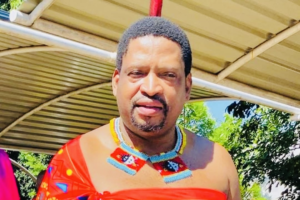RESILIENCE AMID REPRESSION: GRASSROOTS MOVEMENTS FIGHTING FOR CHANGE IN ESWATINI
In Eswatini, where the monarchy wields absolute power and dissent is met with violence, grassroots movements have emerged as beacons of hope and resilience. These movements, often operating in the shadows and under constant threat, are led by ordinary citizens who refuse to accept the oppression and inequality imposed by the regime. By September 2022, grassroots activism in Eswatini had become a driving force for change, embodying the courage and determination of a nation yearning for justice and democracy.
Grassroots movements in Eswatini are not monolithic; they span a broad spectrum of issues and demographics. From rural communities fighting forced evictions to youth groups demanding education reforms and women advocating for gender equality, these movements represent the diverse struggles of the people. What unites them is a shared commitment to challenging the status quo and amplifying the voices of those who are often ignored.
One of the most prominent grassroots movements is the network of community organizers advocating for land rights. In areas like Sigombeni and the Malkerns, families facing forced evictions have come together to resist displacement and demand security of tenure. These communities have turned to local leaders, legal aid organizations, and even international human rights groups to fight their battles. Despite facing intimidation and legal hurdles, they continue to stand firm, knowing that their struggle is about more than just land—it is about their dignity and survival.
Youth-led movements have also been at the forefront of grassroots activism. Frustrated by high unemployment rates, limited opportunities, and the monarchy’s extravagant spending, young people have mobilized to demand accountability and reform. Social media has become their battleground, providing a platform to organize protests, share information, and connect with allies both within and outside Eswatini. Despite facing arrests, harassment, and even violence, these young activists have shown incredible resilience, proving that the fight for democracy is alive and well among the next generation.
Women’s groups, too, have played a pivotal role in grassroots movements. In a society where patriarchal norms often marginalize women, these groups have emerged as powerful advocates for gender equality and human rights. They have taken on issues ranging from access to healthcare and education to gender-based violence and representation in leadership. Their activism has not only highlighted the unique challenges faced by women in Eswatini but also underscored their indispensable role in the broader struggle for justice.
The resilience of these grassroots movements is particularly remarkable given the challenges they face. Activists often operate in an environment of fear, where the state uses surveillance, arrests, and violence to suppress dissent. The lack of financial resources and organizational infrastructure further complicates their efforts. Yet, despite these obstacles, grassroots activists continue to find innovative ways to push forward. They rely on solidarity, creativity, and an unyielding belief in their cause to keep their movements alive.
International support has been crucial for many grassroots movements in Eswatini. Organizations like Amnesty International and Human Rights Watch have documented the struggles of activists, providing them with a platform to reach a global audience. Diaspora communities have also played a significant role, raising awareness and mobilizing resources to support those on the ground. However, much more needs to be done to ensure that grassroots movements have the tools and protection they need to succeed.
The government’s response to these movements has been predictably harsh. Security forces routinely target community organizers with arrests, harassment, and even violence. Activists are labeled as threats to national security, and their efforts are often dismissed as un-Swazi. This hostility underscores the regime’s fear of grassroots power—it knows that the strength of these movements lies in their ability to inspire and mobilize ordinary citizens.
Grassroots movements in Eswatini represent the heart and soul of the pro-democracy struggle. They remind us that change does not always come from the top down—it often begins with ordinary people coming together to demand a better future. As an activist, I am deeply inspired by the resilience and determination of these movements. They embody the hope and courage that are essential for building a just and democratic Eswatini.
The road ahead is undoubtedly difficult, but the resilience of grassroots movements offers a path forward. Their work is a testament to the power of collective action and the unbreakable spirit of the people. In the face of repression, they have shown that change is not only possible but inevitable. Together, they are laying the foundation for a future where every Swazi can live with dignity, freedom, and justice. The struggle continues, but with the strength of grassroots movements, the dream of a democratic Eswatini remains within reach.



